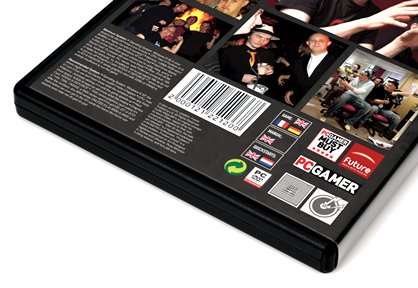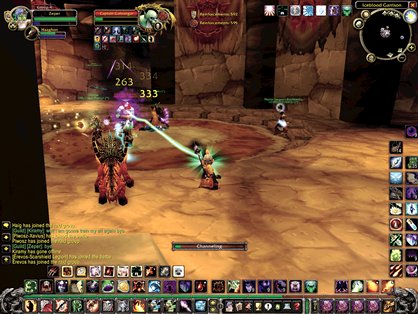See through the specs
Minimum system requirements often mean minimum fun. Is the industry honest about what hardware games need?
Trying to read sense into serial numbers is where we’ve been with graphics cards for a while. It’s common shorthand to write ‘GeForce 6800 or better’ on the back of a game box. Yet despite being ‘300 more’, a GeForce 7100 is a vastly inferior card and possibly incapable of playing the game. Just a single letter can mean a 50% difference in performance: the GeForce 8600GTS, for example, is vastly superior to the 8600GS.
A few publishers have tried issuing definitive lists of what does and doesn’t work on their websites. That’s not much use if you’re still buying from the mall. For the most part, we have a hodgepodge of different styles of naming. Company of Heroes, for example, rather unhelpfully claims you need a graphics card with 64Mb and Pixel Shader 1.1. We’ve already discussed the dubious merits of using video memory to define a graphics card’s ability - there are plenty of 256Mb cards that won’t run this game - and only a select few know what version of DirectX their card supports, let alone what a Shader Model is.

Above: Fine print sucks
Things aren’t made any easier by Windows XP; working out what’s inside your PC with this operating system in place can be nigh-on impossible. In theory, Device Manager should give you a list of everything that’s plugged into your motherboard. But it’s only as accurate as the driver software allows it to be. In one generation of ATI graphics cards, for example, at least eight different models, with wildly different abilities, show up simply as ‘9500/9600 Series’.
Windows Vista makes identifying hardware a little easier - most of it is listed in the Welcome Center. Microsoft have even attempted to do away with the breakdown of system requirements for games altogether, by introducing a ‘Windows Experience Index’ which analyses your components and works out an overall score for them. It’s a much simpler and potentially elegant solution to all the confusion surrounding system specs.
This hasn’t been widely adopted by the games industry, though. For a start, the scale of 1-5.9 is so limited that any respectable PC automatically scores top marks. The real reliability issues, though, come in when a PC with a powerful processor combined with a low end graphics card returns the same score as one with mid range parts throughout - even though the second will likely be better for gaming. “It’s a step in the right direction,” we were told by one developer. What’s the point, though, of trying to come up with a sensible, easy to understand, foolproof system while most minimum system specs are laughably inaccurate anyway?

Above: With the wrong graphics card, that spell will take 20 minutes to hit the target - by then, the target will have killed you and moved on
Weekly digests, tales from the communities you love, and more
Take, for example, Word of Warcraft. The current minimum specification states that 512Mb of RAM is required - and RAM is one of the few specs which aren’t open to interpretation or obscure nomenclature yet. Have you tried playing WoW with half a gig of RAM, though? Don’t try sprinting through Ironforge on a busy night.
Likewise, it’s true that you could probably get BioShock running on a Radeon X1300 as required by the minimum specs. You wouldn’t really appreciate much of the brightly neon, art deco underwater feel for which the game is so widely renowned. Likewise, trying to play Hellgate: London on the Radeon 9000 it claims as an entry point is going to be a truly miserable experience.


